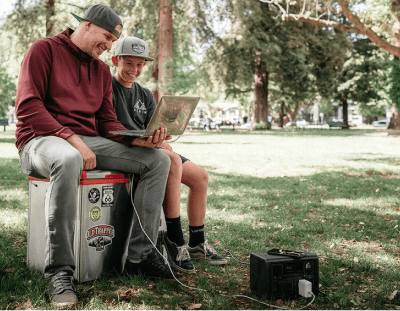Achieving energy independence while managing rising electricity costs has never been more critical for Australian households. Whether you're looking to store solar energy for nighttime use, prepare for power outages, or power your caravan adventures, knowing how to connect VoltX solar panels to a battery safely and effectively is an essential skill. This comprehensive guide provides a proven step-by-step process that ensures your solar panels with battery systems operate efficiently without risking equipment damage or safety hazards. By following the correct procedures outlined here, you'll join thousands of Australians who've successfully reduced their reliance on the grid whilst maximising their investment in renewable energy technology.
VoltX 12V 130W Fixed Solar Panel
Essential Equipment and Safety First
Before beginning your solar panel battery installation, gathering the proper equipment is crucial for both safety and system performance. Your shopping list should include:
- High-quality solar panels – e.g., VoltX 200W Fixed Solar Panel (available at Outbax), weighing 11kg with an IP65 rating.
- Deep-cycle battery – preferably a LiFePO4 lithium iron phosphate model for superior lifespan and efficiency, such as the VoltX 12V 200Ah Pro LiFePO4 battery (weighs 19kg with built-in BMS).
- Solar charge controller – this can either be a PWM or MPPT regulator, though MPPT offers higher efficiency and better performance in varying sunlight conditions.
Aside from these, you'll also need appropriately gauged wiring with secure MC4 connectors, fuses or circuit breakers for overcurrent protection, and potentially a pure sine wave inverter if you plan to power AC household appliances. Don't forget essential safety gear, including insulated gloves and safety glasses, as working with electrical systems always carries inherent risks that proper preparation can mitigate.
Solar Charge Controller 40A 12V/24V MPPT with Bluetooth
The Connection Process: A Detailed Walkthrough
Successfully wiring your solar panel to the battery system requires following a specific sequence that ensures both safety and optimal performance. Begin by mounting your solar panel in a location that receives maximum sunlight throughout the day, ensuring it's securely fastened and angled correctly for your latitude. The critical next step—and one that cannot be emphasised enough—is to connect the battery to the charge controller first, allowing the controller to detect your battery's voltage and configure itself accordingly. Once this connection is secure, proceed to connect your solar panels to the charge controller, carefully matching positive to positive and negative to negative terminals.
If you're working with multiple panels, you'll need to decide between series wiring (which increases voltage) or parallel wiring (which increases amperage), depending on your system requirements. For those adding an inverter to power AC devices, connect it directly to the battery terminals after all DC connections are complete. Finally, perform thorough system checks using a multimeter to verify proper voltage levels and ensure all polarities are correct before allowing the system to begin charging.
Key Wiring Configurations Explained
Understanding different wiring configurations enables you to customise your solar setup for specific power requirements and applications. For basic installations, connecting a single panel involves straightforward wiring from panel to charge controller to battery, making it ideal for beginners or small power needs. When you need to connect solar panels to battery systems with higher capacity, connecting multiple panels becomes necessary. Series connections double the voltage while maintaining the same amperage (perfect for 24V systems). Parallel connections double the amperage while maintaining voltage (ideal for increasing current capacity in 12V systems). Caravan enthusiasts often prefer flexible panels paired with compact Outbax LiFePO4 batteries, creating lightweight yet powerful mobile power solutions that can handle the rigours of travel whilst providing reliable off-grid electricity for extended adventures across Australia's vast landscapes.
Voltx 12V 100Ah Slim Lithium LiFePO4 Battery
Sizing Your System for Optimal Performance
Determining the appropriate size for your solar panel to battery setup requires careful calculation of your daily energy consumption in watt-hours and matching this with sufficient generation and storage capacity. Your battery bank should be sized to accommodate your daily load plus additional capacity for cloudy days—typically calculated by multiplying your daily watt-hour usage by the desired days of autonomy and dividing by your battery voltage. Solar array sizing must account for peak sun hours in your location; for example, a 100Ah battery requiring full daily charging in an area with five peak sun hours would need approximately 240W of solar panels (accounting for system losses). The charge controller must handle both the voltage and amperage from your solar array—use the simple formula of dividing panel wattage by battery voltage to determine the required amp rating, then add a 25% safety margin to ensure reliable operation even during peak production periods.
Final Checks Before Powering Up
Before using your newly installed solar power system, conducting a systematic final inspection ensures safe and efficient operation from day one. Double-check all connections for correct polarity—positive terminals must connect to positive throughout the system, as reverse polarity can cause immediate and expensive damage to components. Verify that all terminal connections are tight and secure, as loose connections create resistance that generates heat and reduces efficiency.
Confirm that all fuses are correctly sized and properly installed in their holders, providing crucial overcurrent protection for each circuit. Once powered up, monitor your charge controller's display to ensure the battery is charging correctly. Most modern controllers show real-time voltage, current, and charging stage information. With these checks complete, you can confidently enjoy the benefits of your new solar power system, knowing it's been installed safely and will provide years of reliable, cost-effective renewable energy for your home or mobile adventures.
VoltX 12V 200W Fixed Solar Panel Black Frame






